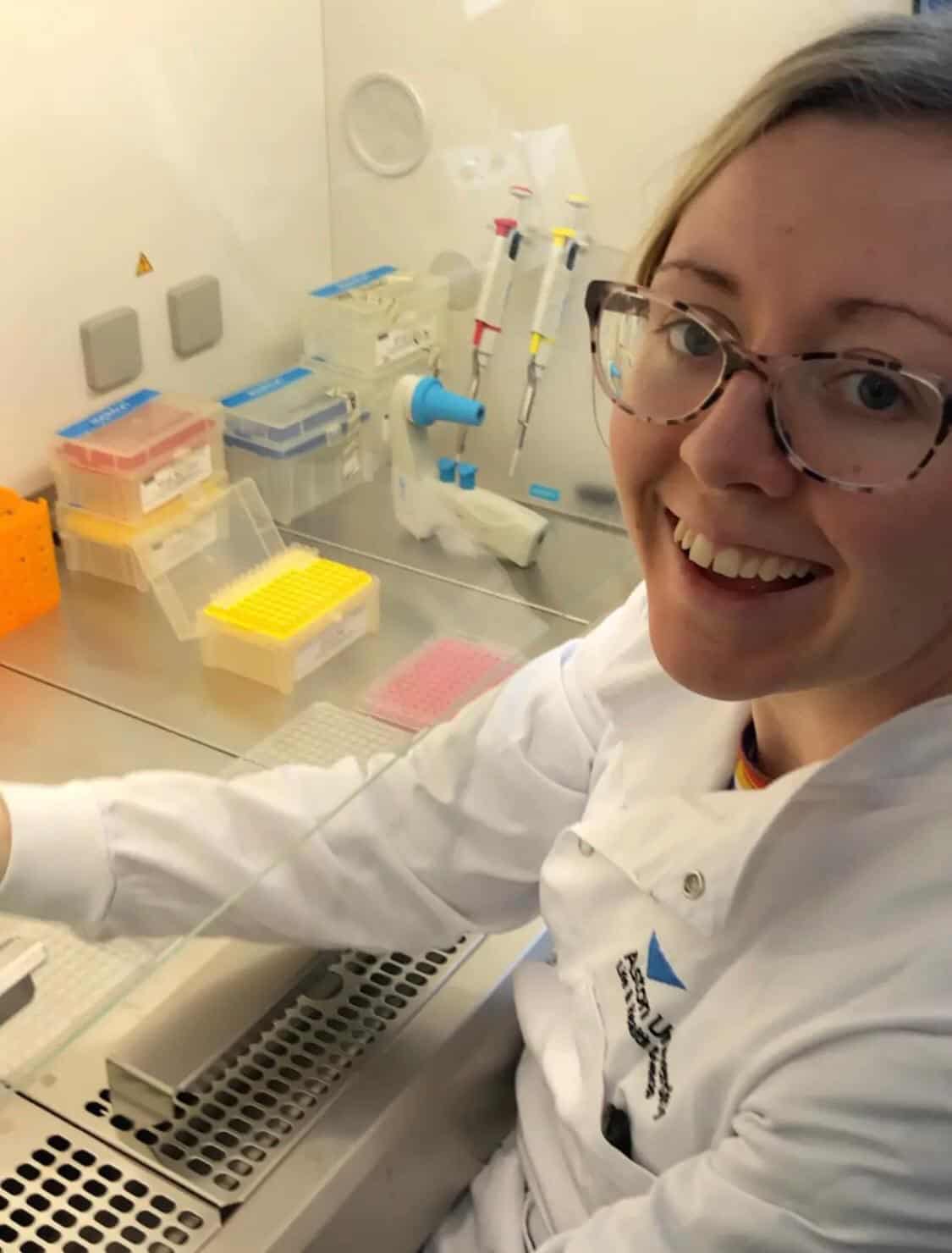An Extracellular Vesicle appreciation blog post
By LifETIME CDT Student: Megan Boseley (Aston University)
Approximately three years ago, after completing a highly specialised, placement heavy pathology degree, I decided the clinical laboratory career, with repetitive workload and little career advancement, was not for me. Therefore, U-turn and fast-forward to today, I am currently enrolled on the first cohort of the “lifETIME Centre for Doctoral Training” PhD programme.
Obviously, on acceptance onto the course, it was a massive “HELL YEAH” from me, excited about the diverse training, travel and cohort-based excursions as well as industrial placement opportunities. However, on acquiring allocated project details, to study the “Scale up of Exosomes for Regenerative Medicine applications”, my external “sounds great” was a 100% cover up for my internal panic. “blimey this will be a challenge” was my second thought. This reaction was fuelled by previous work in a research laboratory during my master’s degree. I had heard some right old horror stories about students working on Extracellular Vesicles (EVs), an expanded group of exosomes, and so was understandably concerned.
But clearly a couple months in, all is well and we are still here. WAHAY! I might even go as far to say I am enjoying myself more than I ever hoped I would. Coming from a clinical pathology background, where really I had zero sense of freedom or opportunity to innovate, this project has given me free reign and has to this point kept me well and truly on my toes. Nevertheless, up to this point overcoming these obstacles has not been a problem and honestly makes every experiment a little more exciting! Alongside this I have realised through detailed reading of the literature just how novel, and also potentially therapeutically powerful vesicles are; they are my friends.

One exciting feature of the nano packages of cellular goodies is their ability to cross the blood-brain/spinal cord barrier, which few drugs can, thus making them perfect candidates for delivering neurological therapeutics, in cases of brain cancer and degenerative disorders. And I am sure we can agree that being able to effectively treat such diseases that have debilitating effects on brain and spinal cord function would be a huge advance for medical science. Slowing or reversing degeneration and restoring function could potentially be life changing to many who are suffering from paralysis or dementia. Like every new field, novelty is needed (and some hard graft!) to bring the promise of exosomes to life at an industrial, clinically relevant scale. Ultimately, this is what my project aims to do: provide strategies and quality research to the vesicle community, which overcomes the current drawbacks in extraction, purification and characterisation of EVs/exosomes towards therapeutically relevant scaled up doses. This must be cost-effective, minimally labour intensive and time effective.
Our work to date has involved expanding human bone marrow mesenchymal stem cells (MSCs) on microcarriers, which are micron-sized spheres of different compositions and surface chemistry, in agitated spinner flasks. Our experiments are focused on screening and optimisation of cell culture conditions. Our goal is to create a scalable process to reproducibly grow a substantial volume of high quality MSCs and their exosomes, using defined, optimised parameters. At that point, we will test the exosomes, to see what they really can do in medicinal terms. At this point in time, having read a huge deal into the subject, I can, with full heart say I couldn’t have received a better project. It is to me like a tree with endless branches, proving a solid, ground-breaking field in the nanomedicine field where there is continuous promise to expand and I hope that my work can add to this impact!

So that is it really for my first ever blog post. I hope you enjoyed finding out what my project is about, what work we have started doing in the lab, and, most importantly, why it is an exciting subject to be working on.








